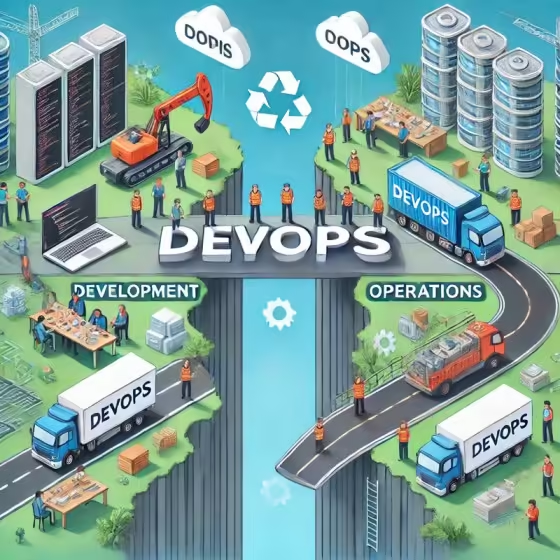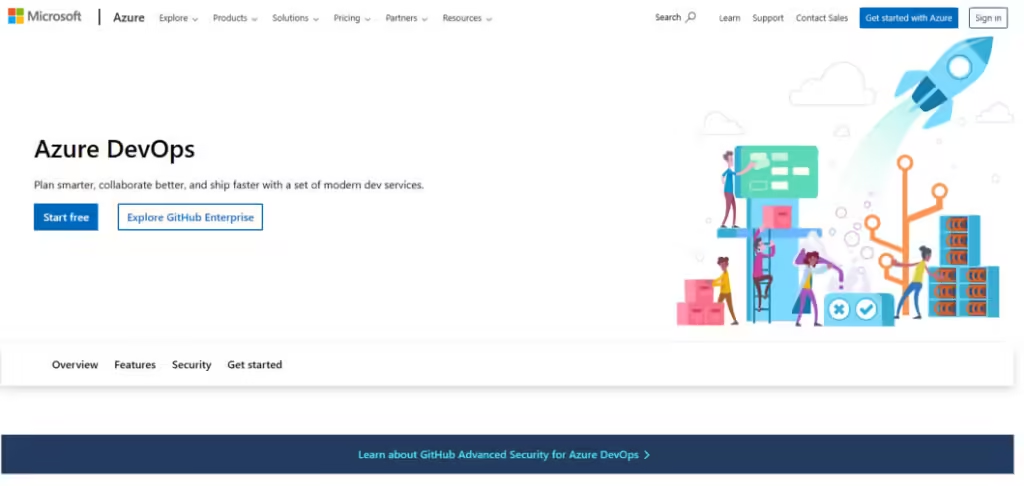Historically, the relation of development and operations in software development was more akin to playing a game of tug-of-war than performing a harmonious dance. With DevOps on the rise, this dynamic transformed into changing what once was friction-filled into a truly smooth, collaborative process. It’s time to dive in and see how DevOps practices enhance collaboration between Development and Operations teams, hence making work life easier and productive.
Breaking Down the Silos

Traditionally, the development and operations teams work in two separate silos. In this model, the developers write the code and hand it over to operations for deployment. The handoff between these two organizations has often led to misunderstandings and days of delay. Enter DevOps—a cultural and technological sea change to tear down the barriers and facilitate collaboration.
Shared Goals and Metrics
Perhaps one of the most significant ways DevOps practices enhance collaboration is by providing alignment to the goals of both teams. With DevOps, development and operations have the same objective in mind: the delivery of high-value software quickly and reliably. This is often made possible through shared metrics and goals-meaning both teams have skin in the game regarding the same outcomes. For instance, deployment frequency, lead time for changes, and mean time to recovery all become critical success metrics that both sides monitor together.
Continuous Integration and Continuous Delivery – CI/CD
One of the most critical reasons how DevOps improves collaboration involves CI/CD. The practices of CI/CD reduce friction that always seems to occur with handoffs between development and operations. This is because code changes are integrated constantly and deployed in a literally hands-off way.
Continuous Integration: Each developer frequently checks out his code and commits it to the common repository, where automated tests are conducted. It allows catching bugs early and helps code to integrate smoothly into the existing code base.
Continuous Delivery (CD): In continuous delivery, the integrated code is automatically released into the staging or production environment. Continuous delivery allows development and operations teams to come together on processes for deployment. That way, when issues arise, they get resolved as fast as possible.
These practices of CI/CD reduce the chances of surprises at the last minute and introduce an environment of collaboration.
Infrastructure as Code (IaC)
A related critical DevOps practice involves the infrastructure as code. IaC leverages approaches to manage and provision infrastructure through code. This approach enables both the development and operations teams to refer to the same set of infrastructure definitions that reduce discrepancies and hence increase consistency
Automated Testing and Quality Assurance
It forms one of those pillars of DevOps, which enables team collaboration by making sure code changes meet predefined thresholds of quality before they find their way into production. Automated testing also helps developers catch bugs early, operations teams will know that the code that makes its way to production is reliable and high quality.
Tools That Facilitate Collaboration
The following tools and platforms are of prime importance in promoting better collaboration between development and operations teams. In this respect, let’s look into some outstanding ones:
Azure DevOps

Azure DevOps is Microsoft’s offering that covers a suite of development tools that work well with many DevOps practices. Using such features as:
Azure DevOps Best Practices: Azure DevOps best practices may help a team to have smooth workflows right from planning and coding to deployment and monitoring.
Jira-Azure DevOps Integration: This would ensure tighter tracking of development tasks or issues at the same time with assurance on how development and operations teams are aligned.
Jira Integration with Azure DevOps
Jira is a popular project management tool which integrates very smoothly into Azure DevOps. It bridges the gap between development and operations by keeping track of progress and issues within both platforms by the teams. One can seamlessly track tasks, bugs, and user stories because it makes sure both teams have a single view of the status regarding the project and hence collaborates with each other effectively.
ChatOps
ChatOps is a methodology of using chat platforms to bring operational activities and notifications inside a single interface. At its core, ChatOps integrates bots and automation onto messaging platforms, which enables both development and operations to better coordinate in real-time, run ad hoc commands, and bring issues to resolution more quickly.
Improving Communication and Transparency

Stand-ups and Retrospectives
Regular stand-ups and retrospectives are part of the DevOps culture. Stand-ups, in this case, are daily, short meetings where representatives of both development and operations discuss progress, blockers, and what they plan to work on during the current day. Retrospectives at the end of a development cycle let teams reflect on what went well and what could have been better. This enhances collaboration because open communication is supported, as is continuous improvement.
Shared Documentation
In DevOps, documentation is not left to the concern of one team. Contributions from and the maintenance of the documentation by both the development and operation teams include things like deployment processes, troubleshooting guides, and configuration details. In this way, everyone gets what they want and misunderstandings are minimal.
In simple terms, DevOps practices mean no barriers, and the culture has to be collaborative between development and operations. DevOps revolutionizes how teams collaborate by aligning goals, integrating processes through CI/CD, leveraging tools such as Azure DevOps and Jira, and improving communication via practices like stand-ups and shared documentation.
With DevOps, the development and operations teams are working side by side; rather, collaborating in many ways to bring about superior software much quicker and efficiently. If you’re looking at improving the dynamics of your teams and speeding up your development processes, then practices such as DevOps will not be a bad thing to implement.







